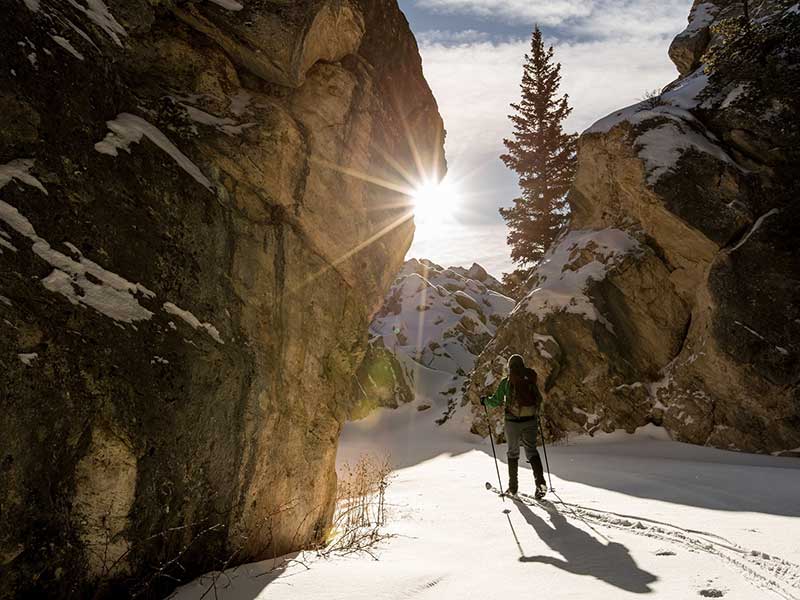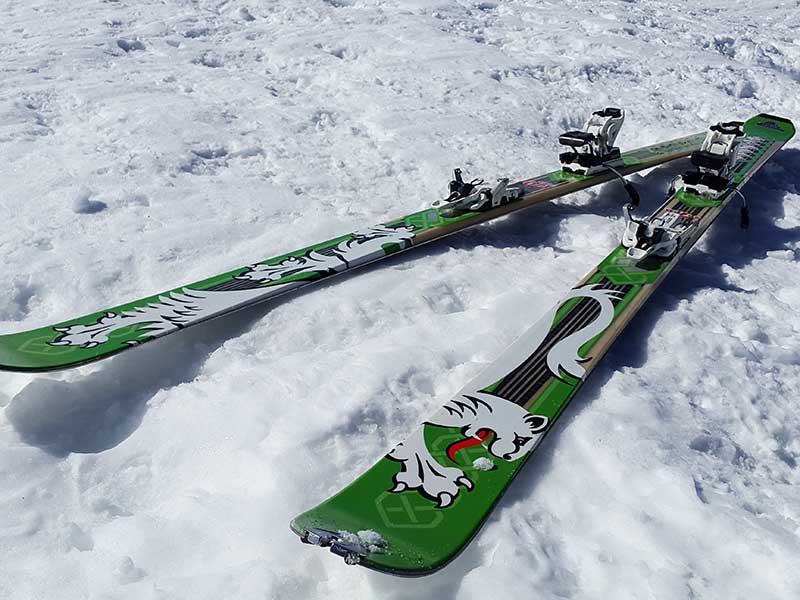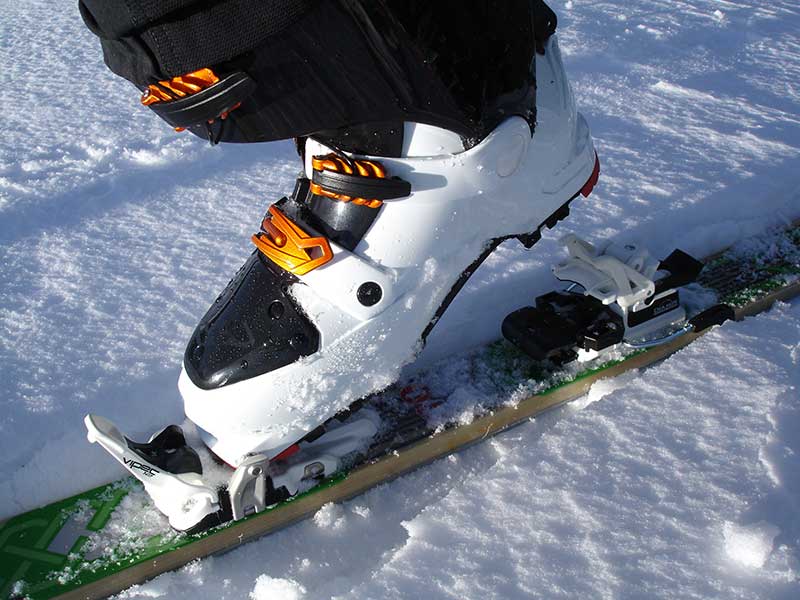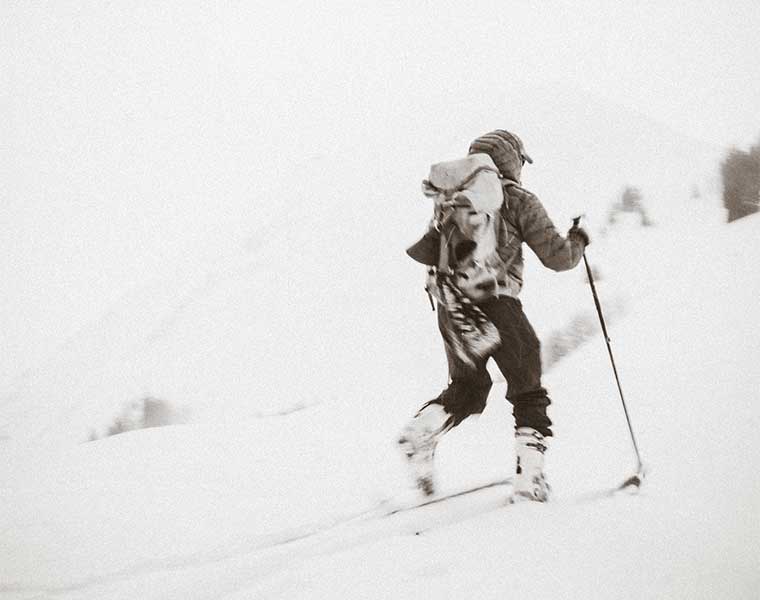Basic ski mountaineering equipment

Ski mountaineering or ski touring is a sport that differs from ski mountaineering or cross-country skiing, taking from here and there of these disciplines, to complete an activity that will undoubtedly excite any mountaineer who has a predilection for the most wintry mountains. Equipment specially designed for ski mountaineering is necessary.
Ski mountaineering requires the fundamental use of certain materials which we will specify below.
Tables

Of course, for ski touring it is essential to have a ski board. However, there is a wide variety of boards, so you will have to choose between the following ones according to activity that you usually practice:
- If you usually do rapid promotions it is recommended that you have some light skis so that you don't accumulate too much fatigue. The most common sizes of this type of skis are the following: 65 to 75 millimetres of skate, 95 to 110 millimetres of tip, 79 to 110 mm of tail.
- If you are looking for more enjoyment from the descents than for ascents, you will need a more versatile ski. Thus, the stability and buoyancy on snow will be increased. If you are looking for a multi-purpose ski, the width of the skid should be between 70 and 95 millimetres. Freeride models are 95 to 120 millimetres wide.
In the following article we explain how to choose ski touring boards.
Sealskins
Seal skins are skins that are placed on the soles of skis so that they only slide upwards. This makes the ascent considerably easier. You can find three types of skins:
- Synthetic hairare the most versatile skins and have a very good grip on hard snow. In addition, their good durability is a plus.
- MohairThese skins are made from goat's wool, and are perfect for use in fresh snow. However, their grip is not as good on hard snow.
- MixedThere are leathers that combine both materials.
Bindings
Bindings are the systems that connect the boots to the skis. There are various types of bindings that are suitable for different activities. On the one hand, there are the competition bindings, an example of which are the ones available in the Dynafit brand. They are very light, but the price is usually quite high. On the other hand, there are bindings that are more versatile. As a general rule, these bindings make it possible to pivot the foot to move forward on the skis. In addition, they are equipped with a heel lock to facilitate calf rest.
Boots

There are four characteristics that differentiate ski mountaineering boots from alpine ski boots:
- They are lighter. As they have to be walked on, they are usually made of lighter materials.
- They have rubber sole. Like a mountaineering boot, they have a rubber sole for when the lack of snow forces you to take off your skis.
- They are not usually very hard boots.
- They allow the cane mobility. The binding is released when ascending, so that the ankle can be flexed, and must be locked for safer descents.
Walking sticks
They are essential for propelling oneself uphill. They also serve as support points during the descent. Ski mountaineering poles are usually longer than alpine poles, because the impulse will be greater.
Backpack
The special feature of the ski mountaineering backpacks is that they are prepared for carrying skis. As a common backpack, there are models of different sizes, which are more or less suitable depending on the duration of the activity to be practised. Backpacks with a capacity of 15 to 20 litres are suitable for short excursions, and those with a capacity of more than 50 litres are suitable for trips of two or more days.
Blades, ice axes and crampons
In case you cannot progress on skis, on steep corridors for example, it is essential to be equipped with ice axes y crampons. This way, you will be able to progress safely on foot. On the other hand, the blades are ski-ready crampons that will make it easier and safer to make progress on hard snow.
Security equipment
Four elements make up the basic security equipment:
- Helmet.
- ARVA: Avalanche Transceiver. This device will give your exact location in case you are buried in an avalanche. It is an essential device to facilitate search efforts.
- ProbeThe probe is an elongated stick that will be used to find the person under the snow.
- Shovelto complete the search work, a shovel will be of great help in digging up the buried person.
Clothing

There is a wide variety of brands that manufacture technical and specialised clothing for ski mountaineering. All of them follow a pattern: the layering system (see article). In the following article, we will tell you everything you need to know about the mountain clothing and how to choose the right one.
We will now show you what you need to wear for ski mountaineering.
Upper body.
To keep the trunk and arms warm, these garments are necessary:
- Inner layerTechnical T-shirt. The T-shirt that is close to the skin will be in charge of keeping the body dry thanks to its good breathability. Synthetic materials are recommended and cotton T-shirts are not recommended at all.
- Intermediate layerjacket : jacket softshell. This jacket is often the most versatile. It should keep the body warm, but it can also be somewhat waterproof as well as breathable (a second layer that can also be used as an outer layer at times).
- Outer layerSnow jacket or windbreaker. These jackets are usually quite thin and light for easy carrying and comfort. It is recommended to use this type of jacket in wet conditions where waterproofing must be total.
Undercarriage
To keep legs and feet dry and warm, the following should be worn:
- Technical underwear. They will serve to wick sweat away from the legs.
- Trousers softshell. These are the classic and most common trousers that provide warmth to the legs. It is recommended that they have pockets to store small devices such as mobile phones or GPS.
- Trousers shell. They are the most waterproof. They will keep your legs dry even if you fall over and over again in the snow. It is recommended that they are light and easy to carry in your backpack.
- SocksChoose socks that are specially designed for sports and that keep your feet as dry as possible.
Accessories
- BuffThe buff will help you keep your face, nose and ears warm in cold and windy conditions. Thanks to the buff, you will be able to breathe warmer air.
- SunglassesThe reflection of the sun on the snow can be quite damaging to your eyesight. Sunglasses will prevent you from suffering the inconvenience of ultraviolet rays.
- Lightweight glovesLightweight gloves should be windproof, as you will be wearing them for most of the trip.
- Thick glovesWhen the temperature drops and light gloves are not enough, you should put on thicker gloves to keep your hands warm.
- CapMany studies show that some of the body heat is lost through the head, so it is highly recommended to cover the head with a thick hat.
Don't miss any adventure in the Pyrenees!
